Top 5 Edible Leaves with Health Benefits
1. Fig Leaves
Fig leaves are known for their cooling and sweet-bitter properties, according to traditional Chinese medicine. They possess anti-inflammatory, diuretic, and expectorant qualities. They have also been used traditionally to treat rheumatism and promote milk production.
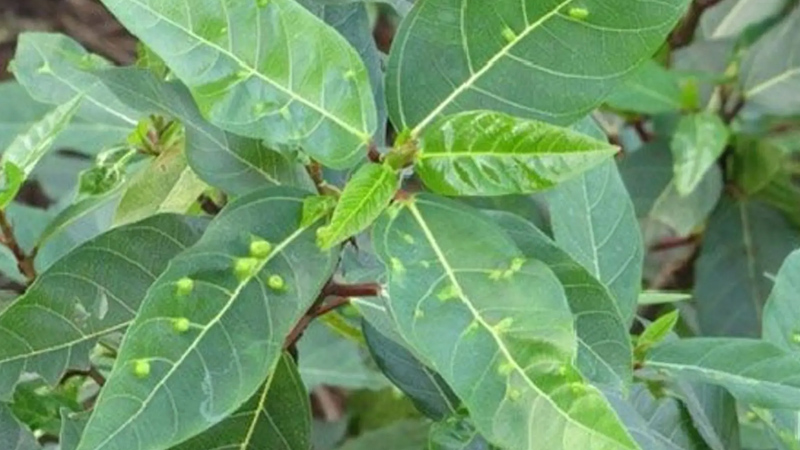
The World Health Organization (WHO) suggests fig leaves may aid in managing diabetes due to their glucose-lowering effects. A small study in 1998 demonstrated that fig leaf extract reduced post-meal blood sugar levels and insulin requirements in participants.
Several test-tube studies indicate that fig leaves and their latex exhibit anti-cancer properties against human colon, breast, cervical, and liver cancer cells. They may also improve blood pressure and lipid profiles.
Fig leaves and fruits are used in various culinary applications, including as accompaniments to boiled meats, sour meats, and fish salads. Fig fruits can be pickled or preserved in salt and eaten with rice. They can also be transformed into medicinal preparations with potential benefits for kidney and gallstones.
2. Guava Leaves
Guava leaves are rich in soluble fiber and antioxidants, aiding in reducing bad cholesterol levels. Consuming a cup of guava leaf tea daily promotes cardiovascular health, prevents free radical formation, and lowers the risk of heart attacks and strokes.
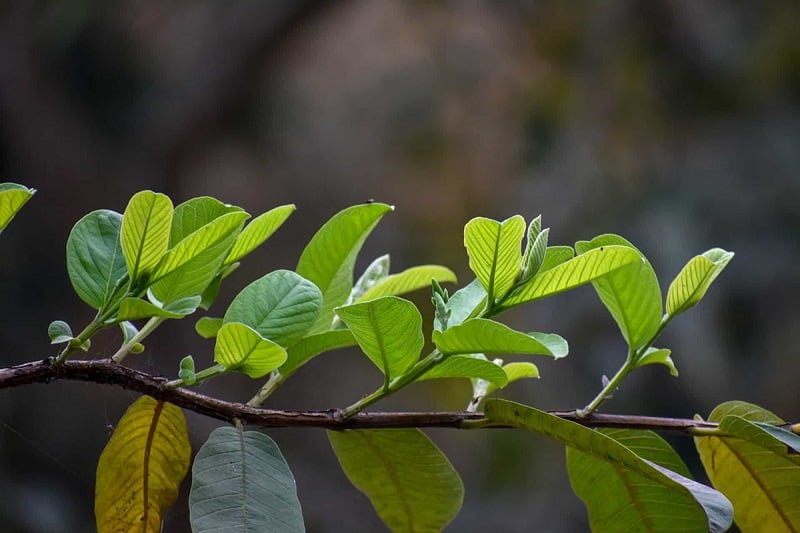
Guava leaves serve as a natural source of antioxidants, protecting cells and playing a crucial role in maintaining overall health. They contain compounds such as flavonoids, polyphenols, and vitamin C, which combat cellular damage caused by free radicals and prevent cardiovascular diseases and cancer.
Guava leaves are versatile and commonly used in traditional dishes like salads, spring rolls, and fermented pork rolls, enhancing the flavor profile.
3. Vietnamese Coriander Leaves
Vietnamese coriander leaves (Polyscias fruticosa Harms), also known as “poor man’s ginseng,” are closely related to ginseng.
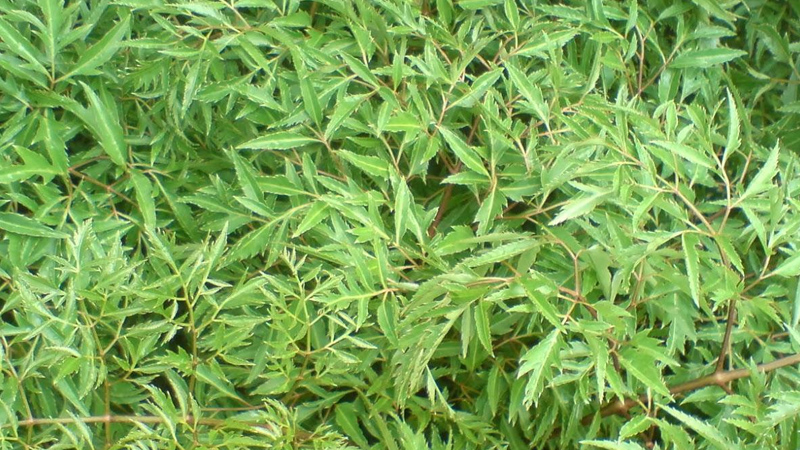
In traditional medicine, Vietnamese coriander leaves are considered cooling and slightly bitter, offering benefits such as detoxification, anti-allergy effects, and relief from constipation. Modern research has identified valuable health compounds in these leaves, including:
Vitamin B complex, particularly vitamin B1, beneficial for cardiovascular health, eyesight, and the nervous system
Glucoside, aiding in enhancing heart contractility and reducing sodium levels
Alkaloids, offering pain relief and numbing effects
Flavonoids, exhibiting antibacterial properties
While the leaves are primarily used as an accompaniment to dishes, the stem and roots of Vietnamese coriander can be utilized in medicinal preparations for diuretic and appetite-stimulating effects.
Vietnamese coriander leaves resemble fish bones, and the smaller-leaf varieties are preferred in traditional dishes like salads, spring rolls, and fermented pork rolls, contributing to their flavor enhancement.
4. Curry Leaf
According to traditional medicine, curry leaf possesses a bitter and astringent taste with a distinctive aroma that can be perceived as unpleasant to some. Modern studies have identified components in curry leaves, including essential oils, protein, vitamin C, carotenoids, and other elements.
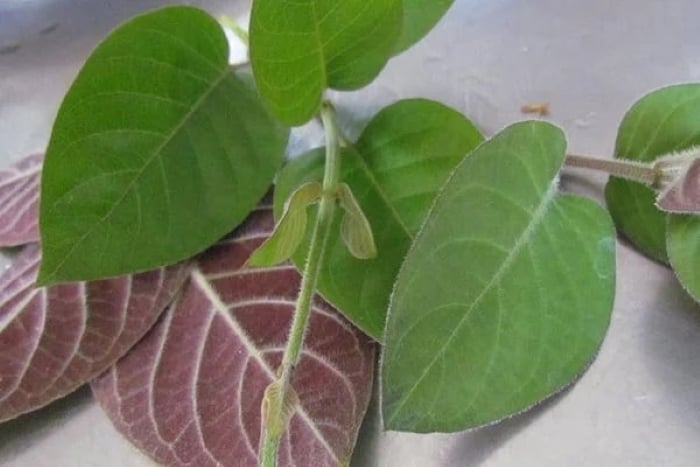
Curry leaves offer various health benefits:
In Eastern medicine, curry leaves are used as an antiseptic, cooling agent, detoxifier, antispasmodic, and blood purifier. They aid in alleviating bloating and indigestion.
Curry leaves help combat diarrhea, support the management of bloody stools, and treat dysentery.
This aromatic leaf also contributes to reducing phlegm and assists in treating coughs caused by bronchitis.
The Sulfur dimethyl disulphide present in curry leaves exhibits antibacterial and anti-inflammatory properties, aiding in the elimination of bacteria in the digestive tract.
Curry leaves are commonly used as a flavoring agent in dishes such as fish salad, pork dishes, and fermented pork rolls.
5. Betel Leaf
In Eastern medicine, betel leaf is regarded as pungent and warming, enabling it to combat cold, provide warmth, and effectively reduce pain. It is traditionally employed to treat musculoskeletal pain, rheumatism, gout, gynecological conditions, sunstroke, and toothaches.
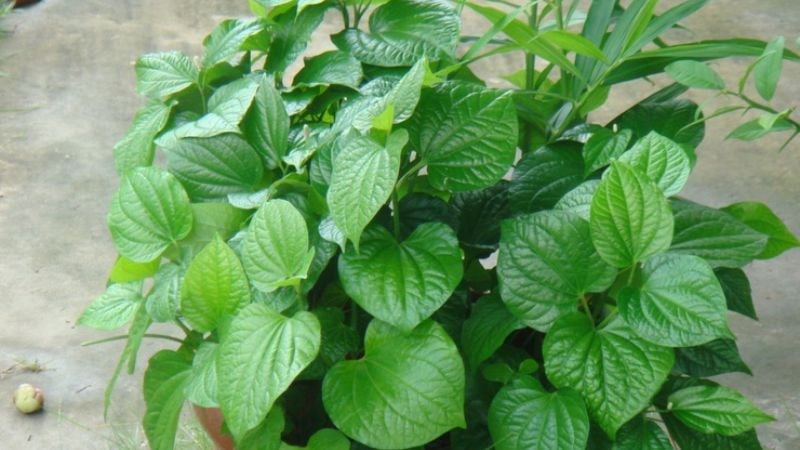
Modern medicine recognizes that betel leaves and their stems contain essential oils comprised of beta-caryophyllene and benzyl acetate, which possess anti-inflammatory and analgesic qualities. Betel leaves are also used to treat skin ailments, rheumatism, headaches, diarrhea, and toothaches.
Betel leaves are commonly incorporated into dishes such as betel leaf-wrapped beef and snail stew with banana and fermented bean curd.































